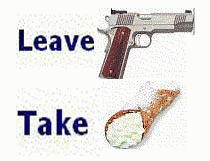: How WWII Made America Literate
excerpt
Long before Pearl Harbor, American military leaders understood that maintaining the morale of their civilian troops was not a luxury but an iron necessity, and that by far the easiest way of doing so was to ensure that they had plenty of books and magazines to read in their off hours. In the words of Bill Mauldin, whose wartime cartoons so memorably portrayed the everyday life of the American G.I., "Soldiers at the front read K-ration labels when the contents are listed on the package, just to be reading something."
Because the Army Library Service had fallen into what Manning calls "a state of neglect" between the wars, it launched a national drive called the Victory Book Campaign, which by mid-1942 had collected 10 million donated books. But many of these unwanted books were of no more interest to servicemen than to their original owners, and it was increasingly evident that getting books into the hands of overseas troops would very soon become far more important—as well as logistically challenging, given the size and weight of hardbacks.
The solution was to distribute paperbacks, which had been introduced to the United States by Pocket Books in 1939. At a time when most hardbacks cost two dollars or more—$33 in today's dollars—Pocket Books printed 38 million 25-cent paperbacks in 1943 alone. Its success persuaded other publishers that it would make commercial sense to work with the military on a program to print books for soldiers, the assumption being that to do so would create a new market for inexpensive paperback reprints after the war. Thinking along closely similar lines, Time, the New Yorker, and other magazines created miniaturized "pony editions" for servicemen.


0 Comments:
Post a Comment
Subscribe to Post Comments [Atom]
<< Home